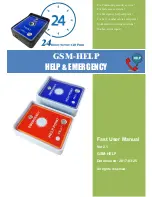
TB 13 Operating instructions
15
What else you should know about the individual functions
If you would like to make an external call, you first need to oc-
cupy an external line. How you do this depends on the tele-
phone system you have. The alphabetic labelling allows you to
dial so called vanity numbers.
You can use this function to talk to a party within your in--house
telephone system during an already existing call.
The redial function dials the last call number again. Specific
redial lets you redial a call number that you have stored specifi-
cally for this purpose. You can add digits to the number man-
ually. Numbers that you have dialled using a destination or
speed--dial key cannot be redialled using the redial button.
Integral 5 / 3:
for external call numbers only
As soon as the subscriber’s line is free, your telephone will ring.
Lifting the handset will redial the call number.
Integral 5 / 3:
You can also request a call--back if a person
does not answer the phone.
You can assign a call number to a free function key and store it
as a fixed destination. You can then dial these destination
numbers by simply pressing the key.
Integral 33:
You can store a call number under each of the digit
keys 0 – 9. This number can contain up to 24 digits. If a number
has already been stored under a digit key, this number will be
overwritten once a new call number is entered.
Integral 5 / 3:
The speed--dial destinations are set by your ser-
vice point.
Integral 33:
This function allows you to dial numbers stored cen-
trally in the system. If required, you can enter additional digits
after the code dial number e.g. an extension number.
Integral 33:
If you have cut yourself out of a hunt group line, you
may still be reached via your internal or external extension
number.
Making
calls
Consultation
Redial key
Call--back
Destination
dial
Speed dial
Code dial
Hunt group
line
Summary of Contents for Integral TB 13
Page 19: ......






































